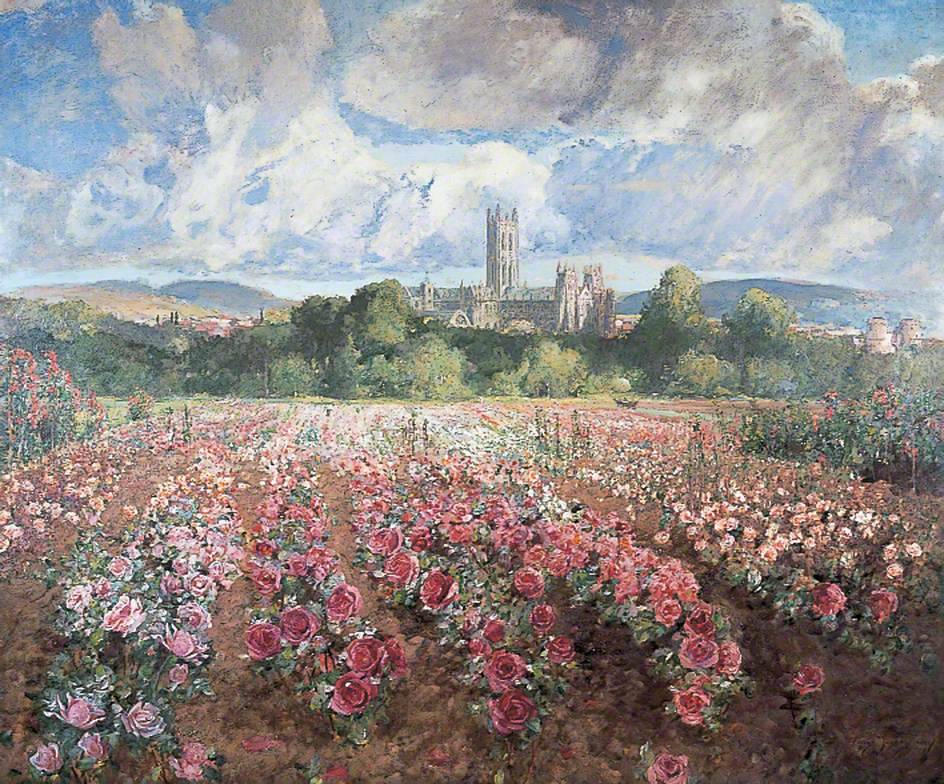
Easter fun at the museums!
Exhibitions, trails and activities; six fun things for all the family to enjoy at The Beaney and...
Did you know this curious-looking object was given as a wedding gift in traditional Asian cultures?
What you can see is actually the skeleton of a deep ocean sea sponge, made from a complex lattice of silica (aka glass). The reason it’s given as a wedding gift is down to the two little shrimp that make it their home. The male and female shrimp settle in and clean the basket. In return, the sponge provides food, trapping it in its tissues releasing waste into its body. The couple live out their entire lives inside the sponge, and traditional Japanese cultures took this to represent the sentiment “till death do us part”.
The Venus Flower Basket would be given in its dry, dead state to the newlyweds as a gift. The couple would then display it as a symbol of their eternal love.

Lucy Locket lost her pocket
Kitty Fisher found it
Not a penny was there in it,
Only ribbon ’round it.
It is most likely you have heard this children’s ditty before, but did you know that it was about a lady so infamous for having an abundance of love affairs, that she was immortalised forever in a number of portraits – one of which now hangs in The Beaney.
Kitty Fisher was an 18th century courtesan, famous for her beauty, wit, and daring horsemanship.
Born Catherine Marie Fischer (1741-1767), she started out life as a milliner (hat maker) before deciding that the courtesan life held much more promise of wealth and popularity. Well known for her expensive taste in jewellery and gowns, Kitty sat for many portraits during her lifetime, including several which are now hanging in the National Portrait Gallery.
When she was not eating thousand guinea bank notes with bread and butter for everyone’s amusement, Kitty was having several public affairs. This supposedly included a rejected boyfriend, or the ‘pocket’, of barmaid Lucy Locket, causing rather a lot of trouble. Her somewhat predatory nature is hinted at in this particular painting by the wolf-like cat sitting beside her, expressive of her rapacious attitude towards men.
Although she eventually settled down and married MP John Norris in 1766, there was no happily-ever-after for poor Kitty, as she died of smallpox four short months into the marriage.

One of the most popular paintings in the Beaney’s collection is actually inspired by a 20th century love poem.
Artist David Murray used a line from Thomas Hood’s ‘Time of Roses’ for the basis of his work, which, quite fittingly for Valentine’s Day, depicts fields of blossoming roses.
It was not in the Winter
Our loving lot was cast;
It was the time of roses—
We pluck’d them as we pass’d!
That churlish season never frown’d
On early lovers yet:
O no—the world was newly crown’d
With flowers when first we met!
‘Twas twilight, and I bade you go,
But still you held me fast;
It was the time of roses—
We pluck’d them as we pass’d!
Likened to Constable, the artist Sir David Murray RA (1849 – 1933) was a Royal Academician and prolific Scottish landscape painter. Having studied at the Glasgow School of Art, he moved to London in 1882 where he was an immediate success.
This romantic late impressionist-style piece depicts the view from Forty Acres Rose Garden, St Dunstan’s, Canterbury.

The Trojan Wars began as a result of the ultimate love affair. When Helen, ‘the face that launched a thousand ships’, took Paris of Troy for a lover, the Greeks commenced a ten-year war over her retrieval.
Agamemnon, painted here on this lekythos vase, was the king of Mycenae and the brother of Menelaus, Helen’s jilted husband. He was positioned as the acting commander of the united Greek armed forces fighting in the Trojan War.
Whilst at war, Agamemnon’s wife, Clytemnestra, took a lover called Aegisthus. In a twist of irony, Agamemnon retuned from the battle unscathed, only to be murdered by his wife’s lover upon his return.
Greek lekythos vases were used during the burial process to store oil to anoint unmarried men or alternatively used as an offering to the gods of the underworld.
Written by Emma Peters, Marketing Volunteer, Canterbury Museums & Galleries
This Beaney is open 10am to 5pm on Valentines Day.
Find out more here www.thebeaney.co.uk
